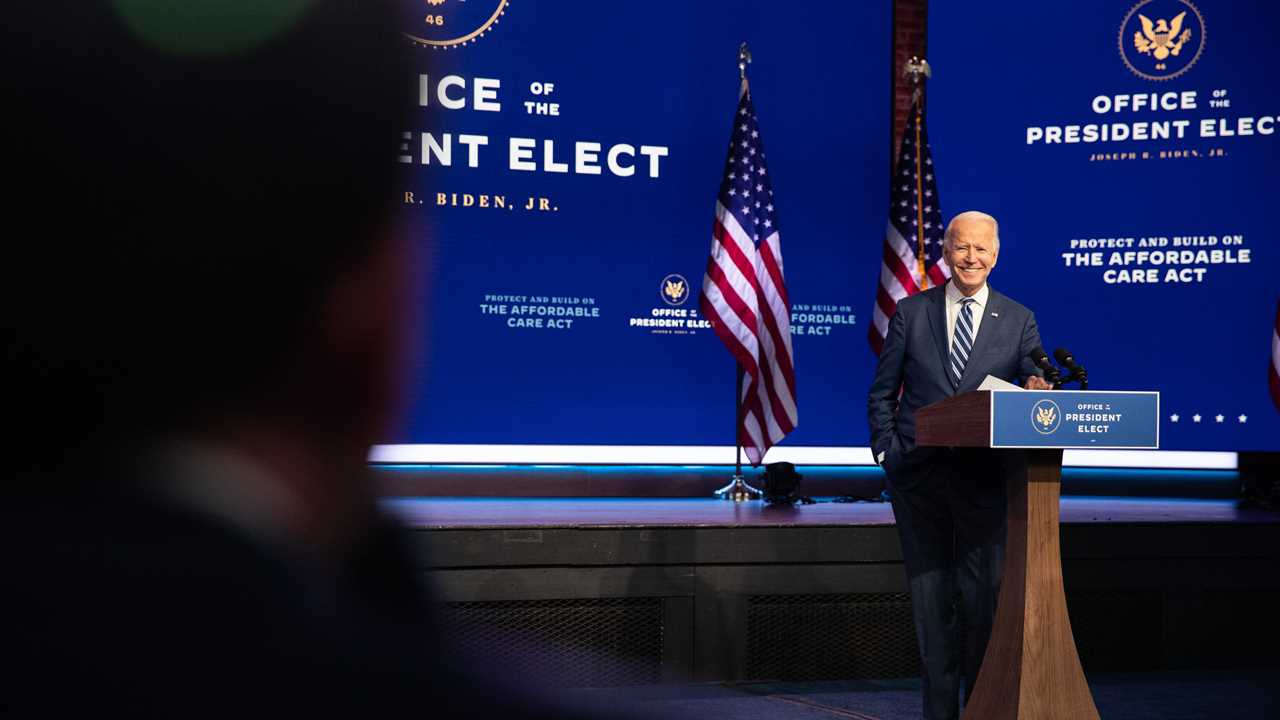
WASHINGTON — President Biden’s $1.9 trillion coronavirus relief bill will fulfill one of his central campaign promises, to fill the holes in the Affordable Care Act and make health insurance affordable for more than a million middle-class Americans who could not afford insurance under the original law.
The bill, which will most likely go to the House for a final vote on Wednesday, includes a significant, albeit temporary, expansion of subsidies for health insurance purchased under the act. Under the changes, the signature domestic achievement of the Obama administration will reach middle-income families who have been discouraged from buying health plans on the federal marketplace because they come with high premiums and little or no help from the government.
The changes will last only for two years. But for some, they will be considerable: The Congressional Budget Office estimated that a 64-year-old earning $58,000 would see monthly payments decline from $1,075 under current law to $412 because the federal government would take up much of the cost. The rescue plan also includes rich new incentives to entice the few holdout states — including Texas, Georgia and Florida — to finally expand Medicaid to those with too much money to qualify for the federal health program for the poor, but too little to afford private coverage.
“For people that are eligible but not buying insurance it’s a financial issue, and so upping the subsidies is going to make the price point come down,” said Ezekiel Emanuel, a health policy expert and professor at the University of Pennsylvania who advised Mr. Biden during his transition. The bill, he said, would “make a big dent in the number of the uninsured.”
But because those provisions last only two years, the relief bill almost guarantees that health care will be front and center in the 2022 midterm elections, when Republicans will attack the measure as a wasteful expansion of a health law they have long hated. Meantime, some liberal Democrats may complain that the changes only prove that a patchwork approach to health care coverage will never work.
“Obviously it’s an improvement, but I think that it is inadequate given the health care crisis that we’re in,” said Representative Ro Khanna, a progressive Democrat from California who favors the single-payer, government-run system called Medicare for All that has been embraced by Senator Bernie Sanders, independent of Vermont, and the Democratic left.
“We’re in a national health care crisis,” Mr. Khanna said. “Fifteen million people just lost private health insurance. This would be the time for the government to say, at the very least, for those 15 million that we ought to put them on Medicare.”
Mr. Biden made clear when he was running for the White House that he did not favor Medicare for All, but instead wanted to strengthen and expand the Affordable Care Act. The bill that is expected to reach his desk in time for a prime-time Oval Office address on Thursday night would do that. The changes to the health law would cover 1.3 million more Americans and cost about $34 billion, according to the Congressional Budget Office.
Representative Frank Pallone Jr. of New Jersey, who helped draft the health law more than a decade ago and leads the House Energy and Commerce Committee, has called it “the biggest expansion that we’ve had since the A.C.A. was passed.”
But as a candidate, Mr. Biden promised more, a “public option” — a government-run plan that Americans could choose on the health law’s online marketplaces, which now include only private insurance.
“Biden promised voters a public option, and it is a promise he has to keep,” said Waleed Shahid, a spokesman for Justice Democrats, the liberal group that helped elect Representative Alexandria Ocasio-Cortez and other progressive Democrats. Of the stimulus bill, he said, “I don’t think anyone thinks this is Biden’s health care plan.”
Just when Mr. Biden or Democrats would put forth such a plan remains unclear, and passage in an evenly divided Senate would be an uphill struggle. White House officials have said Mr. Biden wants to get past the coronavirus relief bill before laying out a more comprehensive domestic policy agenda.
The Affordable Care Act is near and dear to Mr. Biden, who memorably used an expletive to describe it as a big deal when he was vice president and President Barack Obama signed it into law in 2010. It has expanded coverage to more than 20 million Americans, cutting the uninsured rate to 10.9 percent in 2019 from 17.8 percent in 2010.
Latest Updates
- Promotion of Cuomo’s book was halted by its publisher over the nursing home scandal.
- The White House is monitoring Russian disinformation efforts about coronavirus vaccines.
- Many ‘long Covid’ patients had no symptoms from their initial infection.
Even so, some 30 million Americans were uninsured between January and June 2020, according to the latest figures available from the National Health Interview Survey. The problem has only grown worse during the coronavirus pandemic, when thousands if not millions of Americans lost insurance because they lost their jobs.
Mr. Biden has already taken some steps to address that. In January, he ordered the Affordable Care Act’s health insurance marketplaces reopened to give people throttled by the pandemic economy a new chance to obtain coverage. He also took steps to restore coverage mandates that had been undermined by his predecessor, including protecting those with pre-existing medical conditions.
The stimulus bill would make upper-middle-income Americans newly eligible for financial help to buy plans on the federal marketplaces, and the premiums for those plans would cost no more than 8.5 percent of an individual’s modified adjusted gross income. It would also increase subsidies for lower-income enrollees.






